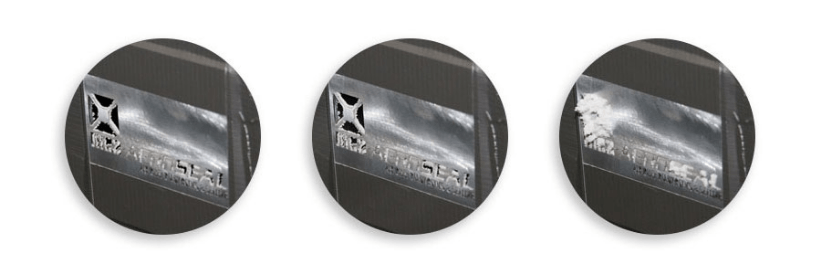Breathe in clean air
in 3 easy steps
Our simple process ensures precise sealing in just a few hours.

# 1:
We block all your vents
First, we block all your vents and registers to pressurize your system. The internal components of your furnace are also blocked off to protect them from the sealant being blown through the ductwork. This system pressurization allows our technology to find all the cracks and holes where the air is leaking. Next, we hook up the Aeroseal machine to measure your pre-seal air duct leakage, giving you a before and after snapshot. More on that later.

#2:
We seal all your leaks
We are then ready to begin distributing our sealant formula throughout your air vent and duct system. While sealing, we monitor your system’s performance and show you all the improvements, as they happen. Our technology is so precise that we only use the amount of sealant necessary with virtually no waste and very little cleanup. This process can vary between 60 minutes to a couple of hours, depending on your initial system leakage amounts.

# 3:
You feel the difference
When we’re finished, a certificate of completion, including both before & after system leakage measurements, is printed and presented to you. Breathe easy knowing your investment is backed by a 10-year warranty, and lasts many years longer.
More importantly, you’ll feel the difference in your home right away.
How does AEROSEAL® work?

The sealant which is soluble in water, is transformed into a gaseous state using heated compressed air. The aerosolized particles seal the whole leakage of the ventilation system.
One leak after another up to a diameter of 1,5 cm is sealed and withstands a pressure of up to 2.000 Pa.
With AEROSEAL® you are able to guarantee airtightness. This sealant, transported by the airflow, seeks for leakages within the air duct system and attaches directly to the edges of those. Using this process you are able to achieve results like you would only achieve with welded or very elaborately sealed air ducts.
Even a significant undercut of the requirements of air tightness class D according to EN 1507, EN 12237, EN 12599, Eurovent or DW144 TM1 is possible.
* ATC 2 according to EN 16798-3 Energy performance of buildings - Ventilation for buildings - Part 3: For non-residential buildings - Performance requirements for ventilation and room-conditioning systems (Modules M5-1, M5-4) - For technical documentation please refer to this link.
Aeroseal sealant has a Non-Food Compound Category R2 product listing from NSF (the National Sanitary Foundation in the US). The listing certifies the sealant is in full compliance with the NSF’s program guidelines for Proprietary Substances & Nonfood compounds. NSF International is the only independent, third-party organization that offers product registration for nonfood compounds such as lubricants, cleaners and water treatment chemicals used in food and beverage processing. Products that pass NSF’s thorough toxicology assessment are registered in the NSF White Book™.
Aeroseal is safe to use in food preparation areas and pharmaceutical industries
Take a step towards a healthy,
comfortable, & eco-friendly space!
Quick links
All Rights Reserved | LIMS-HVAC
Locations
Get in touch
Sign up for our Clean Air newsletter!
Join the Newsletter
We will get back to you as soon as possible
Please try again later

